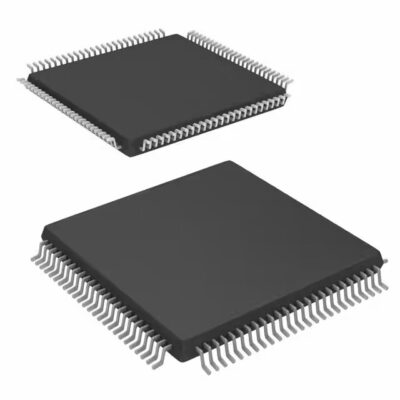EPM240T100C5N
Part Number: EPM240T100C5N
Manufacturer: Intel
Description: IC CPLD 192MC 4.7NS 100TQFP
Shipped from: Shenzhen/HK Warehouse
Stock Available: Check with us
ICRFQ.com - Electronic Components Distributor in China Since 2003

Part Number: EPM240T100C5N
Manufacturer: Intel
Description: IC CPLD 192MC 4.7NS 100TQFP
Shipped from: Shenzhen/HK Warehouse
Stock Available: Check with us
| Datasheet | |
|---|---|
| Category | Integrated Circuits (ICs) |
| Family | Embedded – CPLDs (Complex Programmable Logic Devices) |
| Manufacturer | Altera |
| Series | MAX? II |
| Packaging | Tray |
| Part Status | Active |
| Programmable Type | In System Programmable |
| Delay Time tpd(1) Max | 4.7ns |
| Voltage Supply – Internal | 2.5V, 3.3V |
| Number of Logic Elements/Blocks | 240 |
| Number of Macrocells | 192 |
| Number of Gates | – |
| Number of I/O | 80 |
| Operating Temperature | 0°C ~ 85°C (TJ) |
| Mounting Type | Surface Mount |
| Package / Case | 100-TQFP |
| Supplier Device Package | 100-TQFP (14×14) |
Intel’s MAX® II family of CPLDs includes the EPM240T100C5N. With 192 macrocells, a working frequency of 201.1 MHz, and a technology node of 0.18 UM, it can be used in a variety of ways and works quickly. It is compatible and easy to integrate because it works with both 2.5V and 3.3V voltages and comes in a 100-pin TQFP tray. This guide goes over the EPM240T100C5N CPLD’s most important features and specifications, so you can use it to build digital circuits.
Complex Programmable Logic Devices (CPLDs) are integrated circuits with programmable logic resources like logic gates, flip-flops, and lookup tables that can be set up to do different digital logic tasks. CPLDs provide a hardware platform that can be changed and is flexible for putting digital circuit ideas into action.
CPLDs are often used instead of traditional digital logic circuits with fixed functions because designers can quickly change and re-program the device to meet their needs.
CPLDs have a few benefits over other programmable logic devices like field-programmable gate arrays (FPGAs) and application-specific integrated circuits (ASICs):
CPLDs find applications in various industries and sectors, including:
CPLDs can be used for a wide range of digital circuit design projects because they are flexible and can be programmed. This gives designers the freedom to change and adapt their designs to meet the needs of each project.
The MAX® II CPLD family is a set of customizable logic devices made by Intel (which used to be called Altera) that give designers of digital circuits a lot of choices. It is designed to offer options that are low-cost and use little power while still being high-performing. Different members of the MAX® II family have different features and skills to meet different design needs.
The MAX® II architecture has a number of traits that make it flexible and effective, such as:
MAX® II CPLDs are very flexible and easy to change, so creators can make changes to their designs as needed. Some important things are:
Overall, the MAX® II CPLD family has a strong architecture, uses little power, has a lot of freedom, and can be changed in many ways. Because of these things, it is a popular choice for a wide range of digital circuit designs. It lets designers get the functionality they want while keeping prices and time-to-market to a minimum.
The EPM240T100C5N CPLD can be used in industrial control systems to automate and watch processes and deal with problems like complex control algorithms and the need to respond in real time. The benefits include being able to react to changing control needs, combining multiple functions in an efficient way, and using less power.
The EPM240T100C5N CPLD can be used in communication and networking devices to route data, change protocols, and control network interfaces. Managing high-speed data lines and making sure the data is correct are two challenges. The benefits include processing data in real time, being able to adapt to different networking standards, and better speed.
The EPM240T100C5N CPLD is used in audio/video processing, game devices, and systems that control your home. Problems include organizing interfaces and putting together complicated algorithms for multimedia. Some of the benefits are that the functions can be changed, peripheral interfaces can be added, and control can be done in real time.
In conclusion, the MAX® II family’s EPM240T100C5N CPLD provides a remarkably flexible and affordable alternative for digital circuit design. It is the perfect alternative for a variety of applications, including industrial control systems, communication and networking equipment, and consumer electronics, because of its amazing mix of high-speed performance, extensive configuration options, and seamless integration abilities.
Throughout your design process, our professional staff at ICRFQ is on hand to support you should you have any concerns or need assistance. We invite you to learn more about the EPM240T100C5N CPLD’s capabilities and the virtually endless potential it gives to influence the development of digital circuits.
WhatsApp us